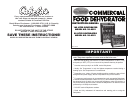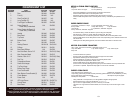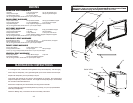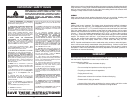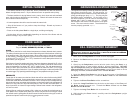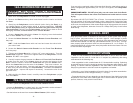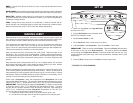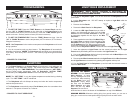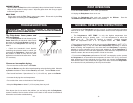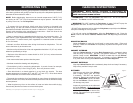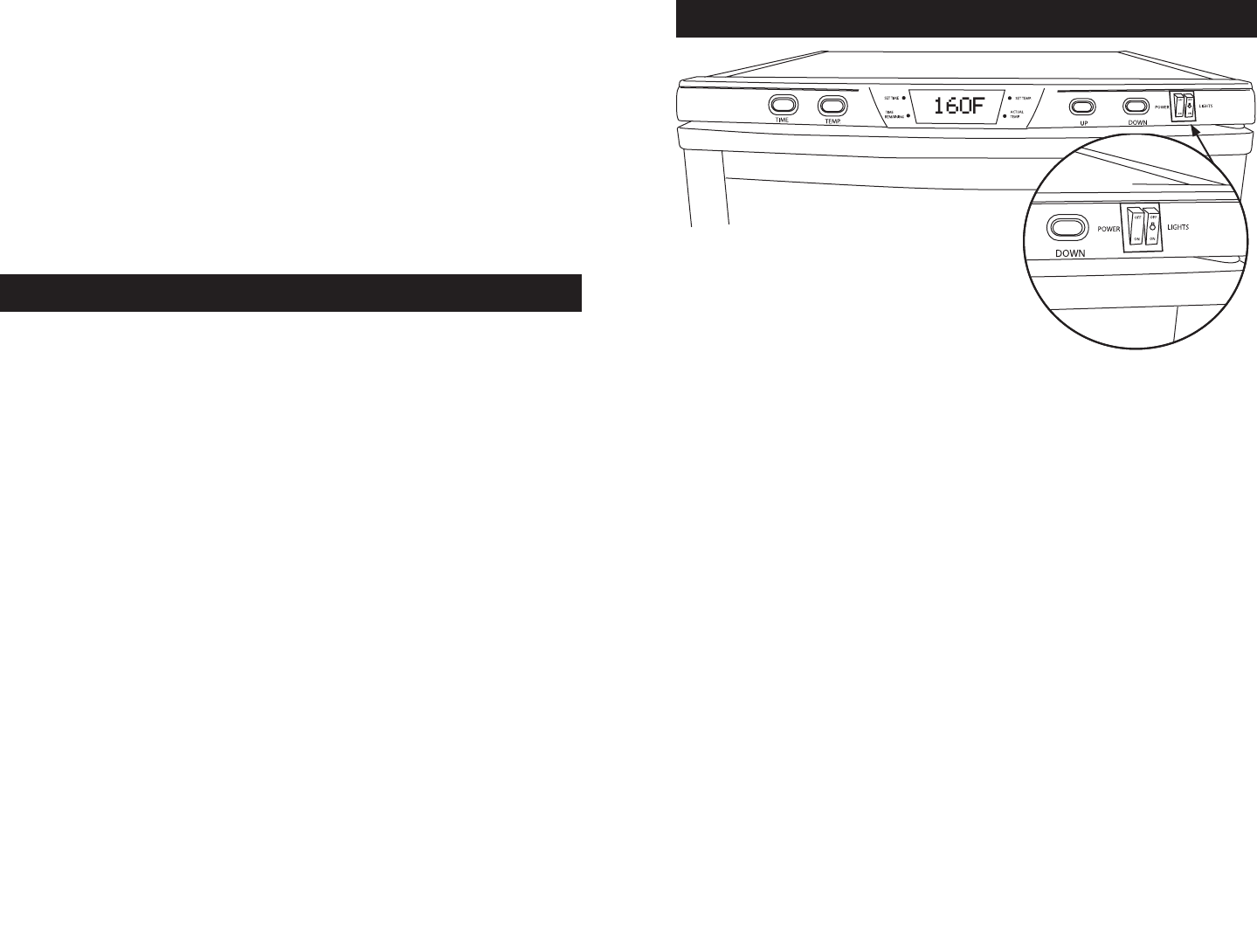
-7--14-
SET UP
1. Make sure the Power and Light Switches
are both set to “OFF.”
2. Plug the Dehydrator into an electrical outlet.
DO NOT use extension cords.
3. Set the Power Switch to “ON.”
4. Fill the Racks with food or other items to be dried.
5. Load the Racks in the Dehydrator. Push each Rack in until it stops.
IMPORTANT: There are three notched Racks. Place these Racks (with the notch
to the back) on the top three Rack Supports. The notches prevent the Racks
from touching the Temperature Sensor on the back inside wall near the top. Any
contact between these parts may cause false temperature readings and/or cycle
irregularities.
6. Close the Door, rmly press on the Door to ensure a good seal.
...PROCEED TO “PROGRAMMING”
BEEF: Choose Flank, Round or Sirloin Tip cuts, as they are the best beef cuts for
making jerky.
WILD GAME: Venison makes excellent jerky because it does not contain marbleized
fat. Flank or Round Cuts work best. Bear and Elk meat also make very good jerky.
POULTRY: Whether making chicken or turkey jerky, it is important that the meat
be cooked heated to an internal temperature of 165
o
F (74
o
C) before dehydrating to
kill disease-causing bacteria.
FISH: Drying sh into jerky requires a lot of attention. It must be cleaned and de-
boned properly and rinsed thoroughly to ensure that all the blood is washed away.
Steam or bake the sh at 200
o
F (93
o
C) until aky before dehydrating.
MAKING JERKY
Meat should be as lean as possible. Using lean meat will help the meat dry faster and
aid in cleanup by decreasing fat drippings. Ground meat should be 80% to 90% lean.
Ground turkey, venison, buffalo and elk are other excellent choices for Jerky.
Jerky seasonings are available for all tastes, or you can get creative and make your
own. Whenever you make Jerky, you should cure the mixture with cure (sodium
nitrite). The cure is used to help prevent botulism during drying at low temperatures.
Follow the manufacturer’s directions on the cure packet.
Keep raw meats and their juices away from other foods. Marinate meats in the
refrigerator. Do not leave meats unrefrigerated. Prevent cross-contamination by
storing dried jerky away from raw meat. ALWAYS wash hands thoroughly with soap
and water before and after working with meat products. Use clean equipment and
utensils.
Keep meat and poultry refrigerated at 40°F (4.4°C) or slightly below; use or freeze
ground beef and poultry within 2 days; whole red meats, within 3 to 5 days. Defrost
frozen meat in the refrigerator, not on the kitchen counter.
Special considerations must be made when using venison or other wild game, since
it can become heavily contaminated during eld dressing. Venison is often held at
temperatures that could potentially allow bacteria to grow, such as when it is being
transported. Refer to the USDA website for further information on food safety. (www.
usda.gov or www.fsis.usda.gov/fact_sheets/index.asp)
When using a Dehydrator, check the temperature of the Dehydrator with a dial
thermometer before drying jerky. The minimum recommended temperature for drying
meats is 130°F (54°C). Temperatures below 130°F (54°C) are not recommended.
IMPORTANT: Before placing the meat in a Dehydrator, it is highly recommended
to heat the meat to 160°F (71°C) BEFORE the dehydrating process. This step
assures that any bacteria present will be destroyed by wet heat. After heating to
160°F (71°C), maintaining a constant Dehydrator temperature of 130-140°F (54-
60°C) during the drying process is important because:
1.) the process must be fast enough to dry food before it spoils; and
2.) it must remove enough water so that microorganisms are unable to grow.



